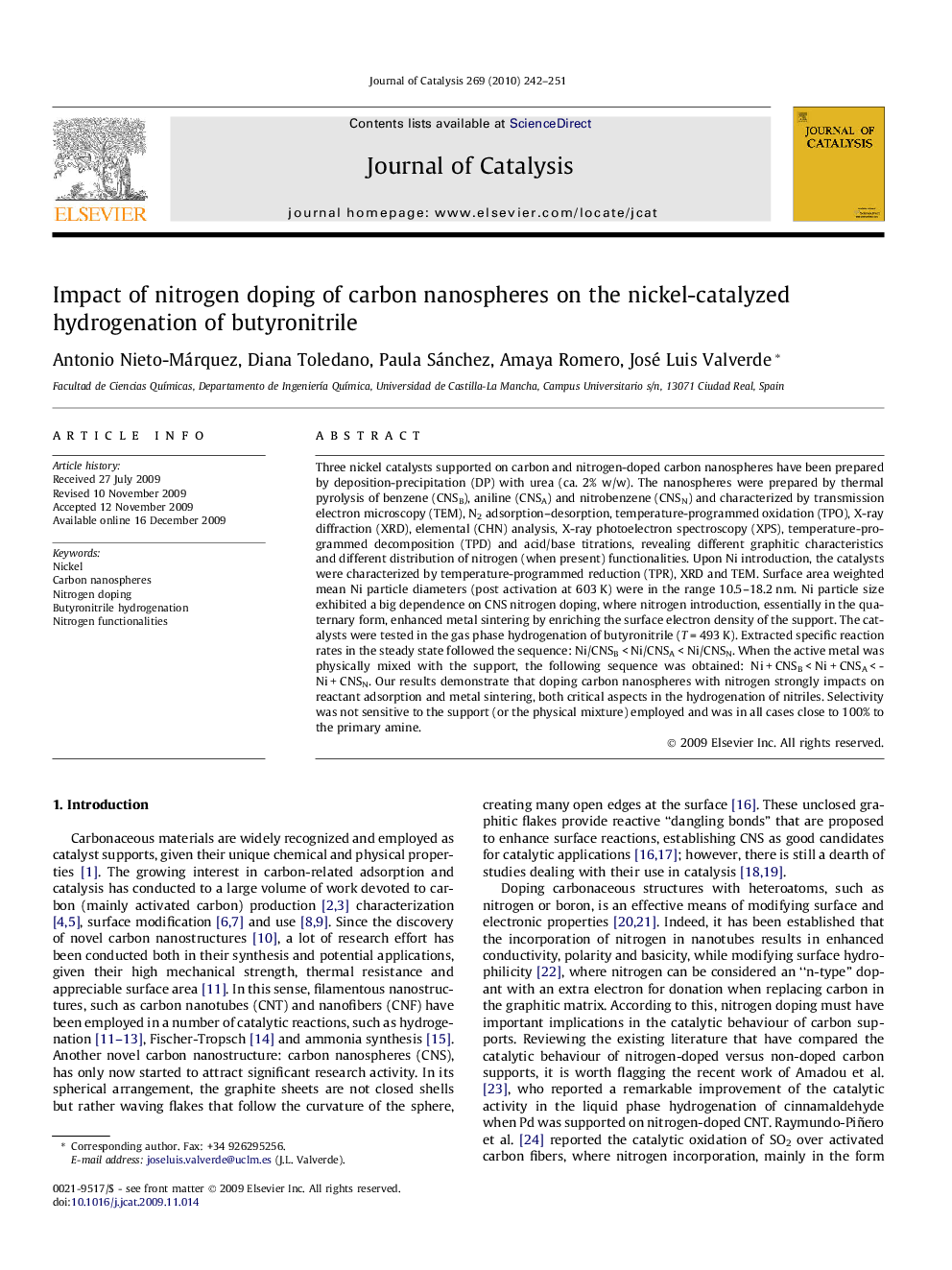| Article ID | Journal | Published Year | Pages | File Type |
|---|---|---|---|---|
| 62008 | Journal of Catalysis | 2010 | 10 Pages |
Three nickel catalysts supported on carbon and nitrogen-doped carbon nanospheres have been prepared by deposition-precipitation (DP) with urea (ca. 2% w/w). The nanospheres were prepared by thermal pyrolysis of benzene (CNSB), aniline (CNSA) and nitrobenzene (CNSN) and characterized by transmission electron microscopy (TEM), N2 adsorption–desorption, temperature-programmed oxidation (TPO), X-ray diffraction (XRD), elemental (CHN) analysis, X-ray photoelectron spectroscopy (XPS), temperature-programmed decomposition (TPD) and acid/base titrations, revealing different graphitic characteristics and different distribution of nitrogen (when present) functionalities. Upon Ni introduction, the catalysts were characterized by temperature-programmed reduction (TPR), XRD and TEM. Surface area weighted mean Ni particle diameters (post activation at 603 K) were in the range 10.5–18.2 nm. Ni particle size exhibited a big dependence on CNS nitrogen doping, where nitrogen introduction, essentially in the quaternary form, enhanced metal sintering by enriching the surface electron density of the support. The catalysts were tested in the gas phase hydrogenation of butyronitrile (T = 493 K). Extracted specific reaction rates in the steady state followed the sequence: Ni/CNSB < Ni/CNSA < Ni/CNSN. When the active metal was physically mixed with the support, the following sequence was obtained: Ni + CNSB < Ni + CNSA < Ni + CNSN. Our results demonstrate that doping carbon nanospheres with nitrogen strongly impacts on reactant adsorption and metal sintering, both critical aspects in the hydrogenation of nitriles. Selectivity was not sensitive to the support (or the physical mixture) employed and was in all cases close to 100% to the primary amine.
Graphical abstractOur results demonstrate that doping carbon nanospheres with nitrogen strongly impacts on reactant adsorption and supported metal sintering, both critical aspects in the hydrogenation of nitriles. Enhanced catalytic activity linked to nitrogen doping was further accused when nitrogen was incorporated in the quaternary form.Figure optionsDownload full-size imageDownload high-quality image (57 K)Download as PowerPoint slide
